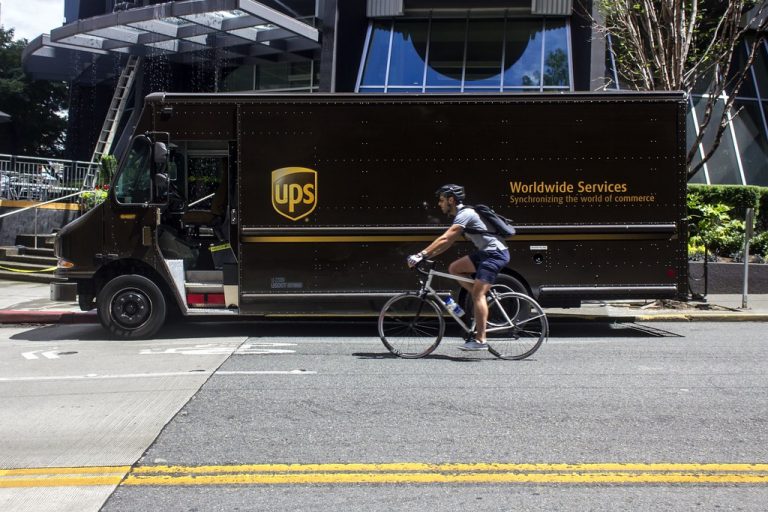Published on October 22, 2019

The very last step of shipping packages in a city — not the end mile but the “final 50 feet” — bedevils delivery drivers. Every day, they face the task of driving and parking safely and legally in urban environments not built for the brick-and-asphalt end journeys of e-commerce.
For these workers every hour is rush hour, and unavailable parking, jammed traffic and tight alleys are just a few hurdles. Once they reach an office or apartment tower, they may have to sprint through loading docks, security desks, elevators, stairs and hallways before reaching the destination doorstep. As a result, labor, time and fuel are wasted, driving up costs for fleets.
Operating out of the University of Washington’s Supply Chain Transportation and Logistics Center, the Urban Freight Lab is collecting data, brainstorming, and testing new approaches to urban shipping, offering a glimpse at more intelligent flows of goods in an increasingly urbanized future.
“Everybody is operating beyond whatever their core product or service might be,” Adam Murphy of Michelin North America says, citing a high level of engagement. “We’re going to learn in the lab of Seattle or Bellevue, but with an eye toward how can we apply this to other urban environments in which we all operate in North America and around the world.”
The public-private partnership in its first two years focused on filling in huge gaps of data in urban infrastructure, according to Anne Goodchild, the center’s founding director and a professor of Civil and Environmental Engineering and Industrial & Systems Engineering.
Continue reading at GreenBiz.
Originally written by Elsa Wenzel for GreenBiz.